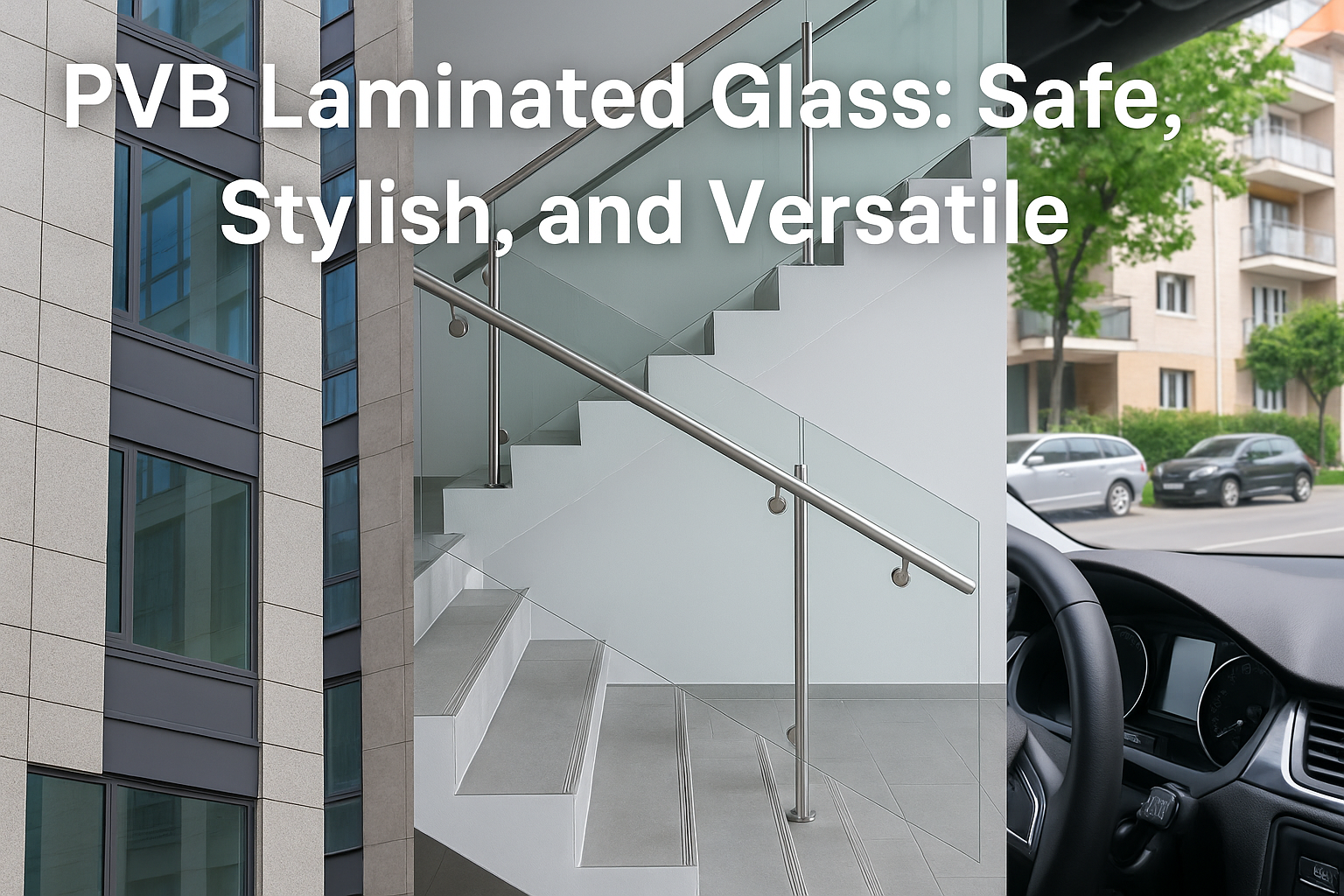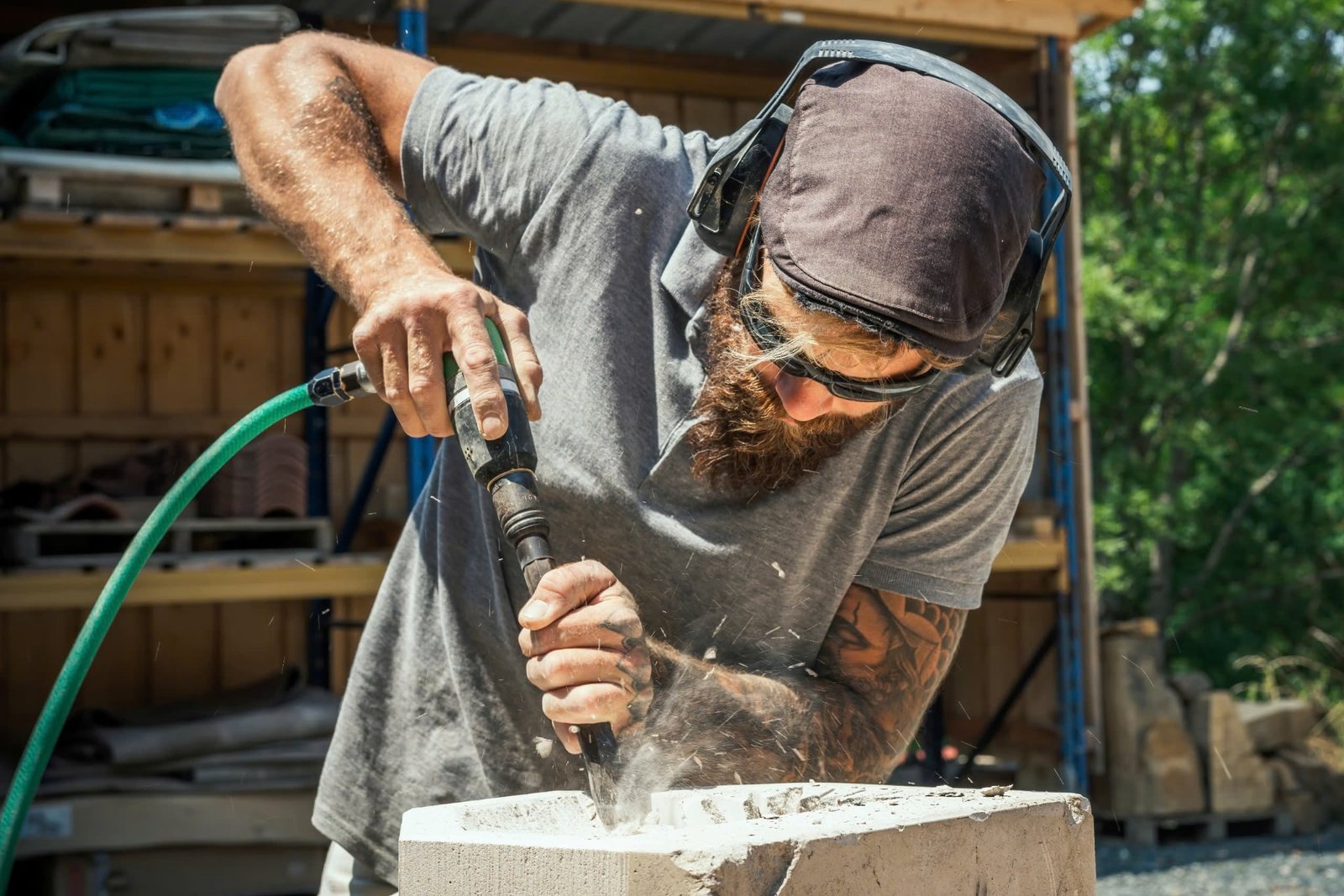
we’ll explore how PVB laminated glass achieves safety, enhances style, and adapts across a wide variety of architectural and design scenarios
PVB laminated glass is a material that balances strength, sophistication, and functionality in modern design. From skyscraper facades and high-end interiors to automotive safety and residential applications, this type of laminated glass has become the gold standard for projects that require both aesthetics and protection. With increasing demands for transparent structures and innovative design, the role of PVB laminated glass continues to expand. In this article, we’ll explore how PVB laminated glass achieves safety, enhances style, and adapts across a wide variety of architectural and design scenarios, from urban buildings to everyday homes.
What Is PVB Laminated Glass and Why Is It Important?
PVB laminated glass is constructed by bonding two or more layers of glass with a polyvinyl butyral (PVB) interlayer under heat and pressure. The PVB film holds the glass sheets together even after breakage, preventing dangerous shards from scattering. This makes laminated glass ideal for settings that require higher safety standards, including vehicles, buildings, and public spaces.
Beyond safety, this laminated structure provides numerous benefits: enhanced acoustic insulation, UV protection, and greater design flexibility. As a result, PVB laminated glass has become a preferred material in architecture and design industries. Its clarity and strength make it suitable for load-bearing features as well as artistic elements, giving designers the freedom to experiment while still meeting code requirements.
For real-world examples and application types, refer to PVB Laminated Glass Applications in Modern Design.
Safety First: How PVB Laminated Glass Enhances Protection
One of the most important reasons to choose PVB laminated glass is safety. The interlayer acts as a binding agent, keeping broken pieces in place upon impact. This is critical in areas like schools, hospitals, public transportation, and high-rise structures where injury prevention is essential. Even during violent weather events like hurricanes or earthquakes, the glass maintains its structural bond longer than traditional annealed or tempered glass.
In automotive design, this safety feature helps reduce injuries during collisions by preventing shards from entering the vehicle. That’s why nearly all modern windshields are made from PVB laminated glass. Some premium vehicles now use laminated glass for side and rear windows as well for enhanced crash performance and theft resistance. Learn more at PVB Laminated Glass for Cars, Homes, and Buildings.
PVB laminated glass is also a reliable barrier against break-ins and vandalism. Unlike float or tempered glass, which shatters easily when struck, laminated glass takes repeated impacts before giving way—offering critical minutes for emergency response in security scenarios.
Stylish in Structure: The Aesthetic Advantages of Laminated Glass
PVB laminated glass isn’t just about protection—it also adds sophistication and style to modern spaces. Its crystal-clear finish, combined with the option to embed tints, colors, textures, and patterns, allows for endless design creativity. Whether used for partitions, storefronts, balustrades, or staircases, laminated glass helps create an open and contemporary look.
In interiors, PVB laminated glass is used in frameless doors, shower enclosures, and decorative panels, offering a sleek and modern alternative to traditional walls or furniture materials. In exteriors, its use in curtain walls and glass facades adds transparency and natural light while preserving energy performance and safety.
The PVB interlayer can be manufactured in a variety of hues or digitally printed to match branding, decorative themes, or even simulate stone or fabric finishes. This makes it suitable for both high-end residential projects and large commercial interiors. To explore these creative uses, visit PVB Laminated Glass in Architecture and Interior Design.
Versatility in Function: Where PVB Laminated Glass Excels
PVB laminated glass is remarkably adaptable and supports a wide range of applications across sectors:
- Architecture: Used in structural glazing, skylights, floor panels, bridges, and canopies. It offers wind resistance, solar control, and compliance with impact safety codes.
- Interior Design: Provides acoustic insulation, privacy, and visual appeal in open-plan layouts, meeting rooms, and hospitality spaces.
- Automotive: Found in windshields, panoramic roofs, and privacy glass, contributing to UV protection and quieter driving experiences.
- Residential: Adds security, noise control, and elegance in sliding doors, balcony railings, and room dividers.
Laminated glass can be integrated with other advanced features such as low-E coatings for solar control, anti-reflective treatments, or fire-rated capabilities. This enhances performance in both passive design and high-tech building systems.
PVB Laminated Glass Installation and Maintenance
Correct PVB laminated glass installation is vital to maximizing performance. Installers must use compatible sealants, ensure edge protection, and follow manufacturer guidelines. Improper handling or exposure to moisture can cause delamination over time, especially at unsealed edges.
During installation, it’s crucial to:
- Use stainless steel or non-reactive glazing channels
- Avoid water retention near exposed edges
- Leave ventilation gaps for exterior laminated glass units
- Ensure compliance with local wind-load and structural codes
Once installed, PVB laminated glass maintenance is relatively simple:
- Clean using non-abrasive, pH-neutral detergents
- Avoid ammonia-based cleaners
- Use soft microfiber cloths
- Inspect regularly for edge degradation or clouding
With proper care, laminated glass can retain its clarity and structural properties for decades.
Cost Factors and Pricing Considerations
The price of PVB laminated glass depends on several factors, including:
- Number of glass layers and thickness
- Size and customization (color, digital print, textures)
- Acoustic or UV protection enhancements
- Tempering or heat-strengthening options
- Installation complexity
On average, laminated glass panels range from $20 to $60 per square foot. More complex installations with color, shape, or fire resistance may cost significantly more. However, the long-term safety, durability, and design value of PVB laminated glass often outweigh the initial investment.
Projects with higher structural demands may compare PVB laminated glass with SGP laminated options. SGP (SentryGlas Plus) offers greater stiffness and strength but at a higher cost and with fewer aesthetic options. For standard architectural and interior design needs, PVB is the more cost-effective and versatile solution.
Finding Reliable PVB Laminated Glass Manufacturers
When sourcing laminated glass, working with reputable PVB laminated glass manufacturers ensures consistent quality and product traceability. Leading manufacturers offer:
- Compliance with international safety standards
- Certifications for fire, acoustic, or hurricane resistance
- Custom-cut and colored options
- Technical support for designers and contractors
Manufacturers should also provide documentation like performance test reports, installation guides, and warranty details to support your project from concept to completion.
Conclusion: Why PVB Laminated Glass Is the Smart Choice
PVB laminated glass is one of the few materials that combines beauty, safety, and adaptability. It supports creative design while meeting rigorous performance criteria across residential, commercial, and industrial sectors. From reducing noise and filtering UV rays to resisting breakage and enhancing building transparency, laminated glass remains a fundamental element of modern design.
For architects, engineers, and designers looking for a material that adapts across structural and decorative needs, PVB laminated glass is a future-forward investment. Whether you’re planning a sustainable high-rise or updating your home with elegant, secure features, this laminated material provides the clarity, strength, and confidence that today’s projects demand.
Explore more about its performance in:

